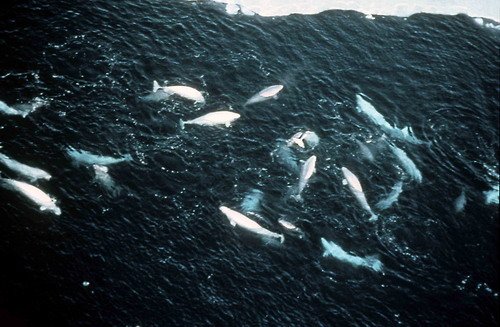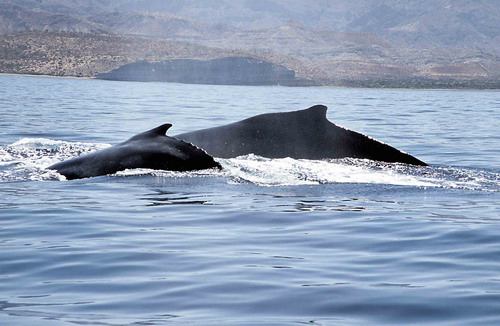The weather has been particularly dreadful in the U.K this winter. To combat the cold, we snuggle up in cosy blankets and treat ourselves to hot cups of cocoa. But when January sea surface temperatures drop as low as 8.3 C off the coast of Shetland, how do whales stay warm?
Whales and other cetaceans are endothermic homeotherms, or ‘warm-blooded.’ Just like us, they produce their own body heat (‘endothermic’) to maintain a constant body temperature (‘homeotherm’). In frigid winter temperatures, they use both physiological and behavioural adaptations to stay comfortable.
Physiological adaptations
Cetaceans have thick layers of blubber beneath their skin. This specialized tissue is made up of fat, collagen, and elastin. Blubber doubles as both an energy reserve to generate body heat, and an insulating layer to retain it. Right whales have the most abundant blubber of any cetacean, measuring more than 30cm thick!

The body shape of whales and dolphins also contributes to their excellent thermoregulative abilities. Their torpedo-like shape minimizes their surface area to volume ratio which allows better heat retention. In contrast, prominent dorsal fins maximize this ratio, allowing cetaceans to more efficiently dissipate excessive body heat. Some cetaceans that inhabit frigid waters, such as belugas, have lost their dorsal fins as an additional measure to retain heat.

Behavioural adaptations
Migration plays a major role in thermoregulation for many cetacean species. The humpbacks we see around the U.K, for example, escape to warm waters of Cape Verde to mate during the winter and return to nutrient rich waters of Norway to feed in the summer. Pregnant mothers will make the journey to Cape Verde again the following year to give birth. Young humpback whales are in particular need of the warmer temperatures, as they have yet to build substantial blubber reserves.

Cetaceans can also alter their activity level to regulate their temperature. Much like going on a jog increases our body heat, swimming increases the body temperature of dolphins and whales. Perhaps this is why juvenile humpbacks with lower blubber reserves are more playful than their adult counterparts!
Whales and other cetaceans use a variety of ways to regulate their body temperature. Using both physiological adaptations and behavioural responses, they stay comfortably warm in the cool waters surrounding the U.K. If you’d like to see first-hand how blubber insulates dolphins and whales, click here to check out a child-friendly science activity provided by the NOAA!
Sources
- Davis, R. W. (2019). Metabolism and Thermoregulation. In Marine Mammals (pp. 57-87). Springer, Cham
- Favilla, A. B., & Costa, D. P. (2020). Thermoregulatory Strategies of Diving Air-Breathing Marine Vertebrates: A Review. Frontiers in Ecology and Evolution, 8, 292
- O’Neil, K. E., Cunningham, E. G., & Moore, D. M. (2019). Sudden seasonal occurrence of humpback whales Megaptera novaeangliae in the Firth of Forth, Scotland and first confirmed movement between high-latitude feeding grounds and United Kingdom waters. Marine Biodiversity Records, 12(1), 1-5
- SeaTemperature.org. (2021, January 25). United Kingdom sea temperatures. Retrieved from this link.
- Scientific American. (2009, May 13). How do marine mammals avoid freezing to death? Retrieved from this link.
- National Geographic Society. (2012, October 09). Blubber. Retrieved from this link.
- World Wildlife Fund. (2011, September 12). Ten Interesting Facts about Beluga Whales. Retrieved from this link.
Megan
Sea Watch Volunteer
Feature Blogger
























